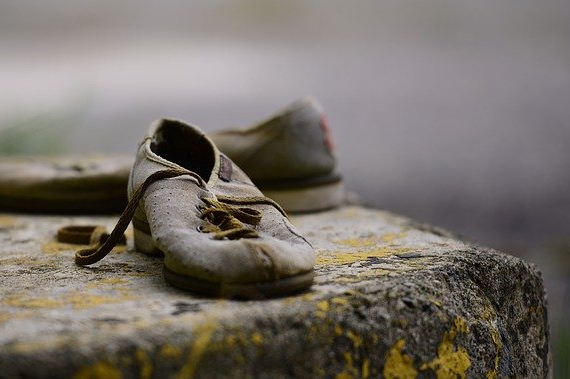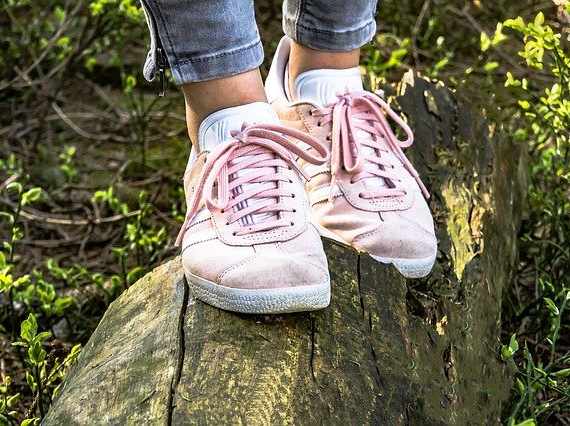5 Health Benefits of Comfortable Shoes
It’s difficult to go an entire day without wearing shoes. Our footwear has a bigger impact on our health than you’d expect. If you’re prone to back pain, fungal infections, and distress on your feet, these health concerns could be a result of your footwear.
Let’s unravel the many health benefits of wearing comfortable shoes and ways you can make wiser choices for your feet.
Improve Your Posture
There are many ways to improve your posture. When you stand up, all of your weight distributes to your feet. So, if you’re wearing comfortable shoes that aren’t flat or have a high heel, with support, you’ll see an improvement in your posture.
The definition of comfortable and healthy shoes means evenly distributing your body’s weight throughout your feet. When wearing heels over three inches in height, your pelvis tilts forward. This causes your lower back to curve. This curving action applies a lot of pressure to your lower back and leads to poor posture.
Comfortable shoes enable you to walk and move while standing fully upright with no pain in your joints or muscles surrounding your back lower.
Also, when you wear shoes that feel comfortable on your feet, you’ll stand taller since you’ll feel confident about your appearance, rather than wanting to hideaway.
Improve Blood Circulation
When shoes are restrictive, they can feel tight and create pressure. As a result, this can lead to poor blood circulation, leaving you prone to pins and needles. Comfortable shoes will feature laces or a strap that you can adjust to suit your feet’s length and width to not restrict blood flow to your feet.
Even if you spend a large portion of your time sat or stood still, your footwear should be comfortable to prevent varicose veins or venous return. Constant tension and pressure can cause you to move less and feel more tired as oxygen isn’t being transported around your entire body.
Wearing comfortable shoes improves blood circulation and prevents your feet from getting colder than the rest of your body.
Prevents Foot Pain
Whether you’re sat or stood, you want to remain comfortable in your footwear. We’ve all been in situations where shoes that don’t fit well or are designed poorly put incredible stress on our feet.
Fortunately, wearing comfortable shoes prevents pain, and eliminates blisters forming. Uncomfortable shoes can lead to bunion growth. Wearing narrow or high shoes for long periods can even lead to feet deformities, making it difficult to remain stable.
Comfortable shoes hug your feet and provide support and a cushioning effect around all angles of your feet. As a result, you’ll find that you can walk farther or stand for longer without the balls of your feet aching or requiring a foot massage on your arches.
Prevent Fungal Infections
Comfortable shoes are important to your foot health as they limit the chances of fungal infections or athlete’s foot. Wearing shoes that fit well, have ventilation, and are waterproof reduces your chances of toenail fungal infections.
When your feet have enough room to wiggle in your shoes, they aren’t pressured by the shoes, which can weaken your toenails. When your toenails are weak, you’re more likely to develop a toenail fungal infection.
Whether you wear your shoes for running or walking in the rain, they shouldn’t hold moisture. A damp environment is a perfect condition for organisms to grow.
Comfortable shoes won’t allow any moisture into the shoes and allow any sweat from your feet to escape, thanks to a breathable, mesh material.
Reduces Stress on Your Spine
Treating your feet right with comfortable shoes can avoid chronic back pain. Shoes that are cushioned and fit correctly adjust to your feet’s natural arch to absorb shock. Wearing comfortable shoes helps with any back pain, especially if your footwear is cushioned and provides arch support.

How to Choose Comfortable Shoes
To discover comfortable shoes, you should know what features to look for. Most importantly, for your shoes to benefit your health, they won’t feel tight or cause any discomfort when you’re moving or standing in them.
Consider Your Foot’s Arch
To find comfortable shoes for your feet, you should consider your foot arch type to find appropriate footwear for you. Try dipping one foot in water and placing your damp foot on a large piece of people to see your arch.
If there’s an even mark of water at the front and back of your foot, you have a neutral arch. This means that your foot’s wear supports most of your body weight. You should consider footwear with firm midsoles in the rear to provide an equal balance and eliminate any poor posture.
If most of your foot leaves a mark on the paper, you have a low arch. This means you’re more likely to experience muscle stress on your feet when wearing shoes. We recommend choosing footwear with a straight sole and cushioning.
Alternatively, if you have a high arch, a considerable patch of your foot will be missing in the middle of the footprint. To keep your feet healthy and pain-free, you’ll require shoes that are flexible and can bend easily to match your foot’s shape. You should also look for padding around the ankle to limit any aches and pains.
A Good Fit
A correct fit is the most important way to ensure you’re wearing comfortable shoes. When your shoes are too tight, they can restrict your blood flow and contribute to back pain. However, when your shoes are too loose, they provide limited support.
Once you’re wearing the shoes, check that your heel doesn’t slip inside the shoe as you walk. It shouldn’t ride up when each movement.
Properly measure your feet to check your size. Some stores have different size measurements, so use a measuring device at a new store. It’s common to have one foot larger than the other.
We recommend wearing socks you’d typically wear – including thickness. Or if you don’t wear socks with the style you’re looking into, opt for a thin shoe sock at the store to prevent spreading any bacteria.
Stand up wearing your new shoes, and slide your index finger between your heel and the back of the shoe. If the shoes fit you correctly, your finger won’t feel too tight or loose.
Check The Shoe’s Quality
Test that the shoes are made of high-quality materials. Squeeze the shoe and let go. The heel should be rigid and bounce back into shape, rather than sag quickly.
You can also test the shoes will be comfortable by feeling the insole. It should be soft, with no rough seams present. Imagine how your feet will feel when they’re inside the shoe.
The shoe’s sole should be flexible to move with the shape and size of your feet. Place a shoe in your hand and bend it in half. A flexible sole will prevent any pain in your foot joint when you move around.
If the sole isn’t flexible, your feet will ache, and you’ll become tired quickly when walking or standing still for a while.
Heel Size and Distance
There are many shoes available, and you can find some comfortable high-heeled shoes if you know what criteria you’re looking at. Choose a maximum height of 9cm, if you have a flat arch in your feet, otherwise, the shoes will ache your feet as you walk.
Most importantly, the heel should be centered in the back of the shoe, so turn the shoe upside down to look. If it’s poorly made, the heel will be off-centered, which can result in back pain and impact your posture. A thicker heel provides more stability than a thinner one.
Look at the distance between the heel and the sole. Anything that’s 3cm or less, will make it difficult to transfer your weight, making your feel off-balanced evenly.

What Bad Shoes Do To Your Health
We’ve discussed that wearing comfortable shoes can be beneficial to your health and confidence. But, what happens if you purchase a pair of shoes that are uncomfortable?
First, when you refer to shoes as ‘bad’, we’re talking about the manufacturer using poor materials, and not providing enough ankle and sole support. Wearing uncomfortable shoes can result in pain and discomfort, as well as the following health conditions.
Ingrown Toenails
It’s critical that you choose comfortable shoes that fit you well and eliminate any foot pain. If your shoes are too tight, short, narrow, and are designed flat, rather than rounded around the toes, you will likely experience ingrown toenails.
Tight shoes create pressure and a tightening effect on your toenails to push the nail into your skin. Alternatively, shoes that are too loose can cause your toes to move around as you walk and hit against the front of the shoe.
To prevent ingrown toenails, stand up in your new shoes, and bend down to feel if your toes are cramped. Test that you can move your toes without them feeling too squashed. Plus, the length and width of the shoe should suit your feet.
Neuropathy
Neuropathy – also referred to as nerve damage – can be the result of uncomfortable shoes. When your shoes fit too tight, they can injury your feet and result in pain that damages the nerves in your feet.
Avoid wearing pointed shoes that can tighten your toes. You should also avoid high heels or completely flat shoes, but opt for a slight platform, so your body’s weight is evenly distributed through your foot as you walk. Consider laces and buckles so you can adjust the shoe’s fit, so they’re not too tight or loose.
Uncomfortable shoes are often made of unbreathable materials, and not leather or mesh, so your feet can’t stay cool. Avoid shoes made from plastic or synthetic materials and choose a sole with a cushioning effect to prevent pins and needles.

Joint Pain
Uncomfortable shoes can cause muscle imbalances and joint paint. Ill-fitting shoes or ones that don’t provide support can cause knee pain.
If you sacrifice style for comfort, i.e. wearing high heels that are poorly designed, you can add more pressure on your joints as well as your lower back. Wearing shoes that are comfortable can distribute any distress on your knees as well as ensuring your knees are properly aligned.
Flip-flops provide little support for your feet, because they move your center of gravity forward. This means you use different muscles to stand upright, which can add pain and discomfort to your spine, and knees.
Back Distress
Not only can ill-fitting shoes cause back pain, but so can shoes that have little cushioning or the heel is off-set. For example, flip flops are flat and provide no support, reducing in arch pain, which can send a shock up to your back.
High heels are uncomfortable for most people to wear, and the excessive height can produce stress and strain on your lower back and throw off your spine’s alignment, leading to your back twisting as you move in heels.
If you experience back pain after walking or standing still, this could be due to wearing uncomfortable shoes. Invest in running shoes that stabilize the foot and cushion the arches to absorb any shock each time you move your feet.
Related Articles:
- The Best Shoes for Plantar Fasciitis
- Best Shoes for Achilles Tendonitis Pain
- The Best Shoes for Back Pain

